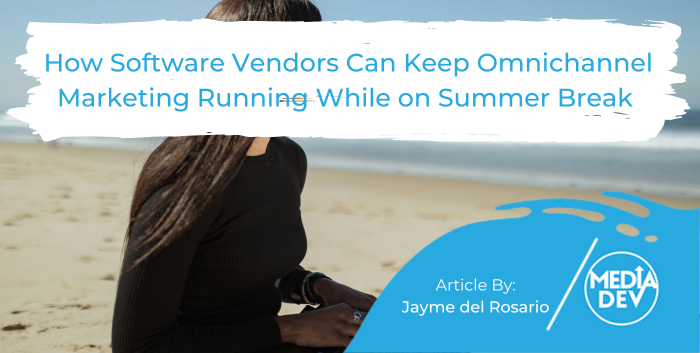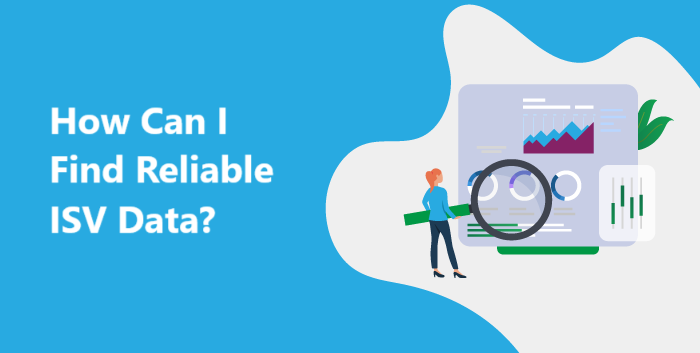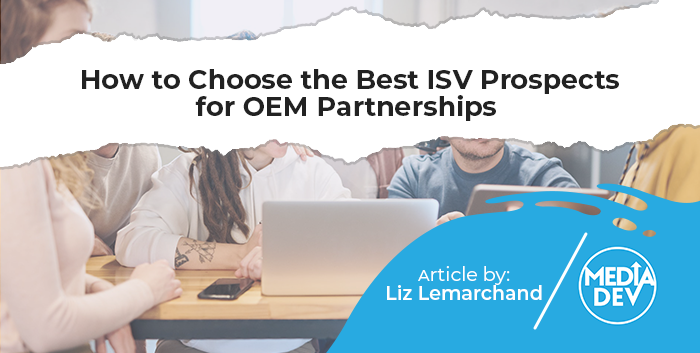ISV-OEM lead generation is not rocket science. But it’s not a piece of cake either. And I can tell you from experience that many marketing agencies fall into predictable traps because they can’t really get their heads around OEM.
Creating more visibility for your OEM program means understanding your ISV audience inside and out. It means understanding how the integration of your product into theirs creates a win-win for both parties. And it means understanding how your product fits into the scope of what their end-user customers need.
We have worked on hundreds of ISV-OEM outreach campaigns over the years and you’d be surprised at the number of times our clients reached out looking for help because their OEM marketing was not on point. Because of that, we came up with our top 5 do’s and don’ts for ISV-OEM lead generation to keep you on track as you work to increase your sales pipeline of valuable OEM opportunities.
#1 DO target the right ISVs
ISV-OEM integration only makes sense if your solution enhances the product offering of the ISV. Randomly selecting any type of ISV account therefore will NEVER work to get you the top-quality opportunities you are looking for. Carefully vetting the right ISV companies based on a specific set of criteria is the most important first step you can take when running ISV-OEM lead generation outreach.
You can even take it as far as creating an Accounts Based Marketing (ABM) approach so that you hone in on the perfect fit. Ask yourself these questions when thinking about which ISVs would benefit most from your offer: What would my product bring their end-user customer? What does the market for their solution look like right now? Are there competitors that are taking over the space? What are the critics saying about their product(s)?
#2 DON’T use end-user-oriented content and DO create ISV-specific messaging
It goes without saying that end-user content is not at all appropriate for an ISV audience unless you want them to use your solution like any other company would. More often than not, OEM partnerships are confusing to ISVs. The reason for this is that the messaging used to target ISVs is unclear. The fact that embedding software can be done in a number of ways tends to baffle people: It can be done through a simple API type of connection, or more complex integration of software code (taking one product and making it a seamless part of another). However, this type of technical overview is not always what should be highlighted from a marketing standpoint, even when the integration is easy.
Creating OEM use cases, case studies and success stories that outline what successful integration looks like will help your ISV audience better identify with the value proposition of your partnership offer. “What’s in it for me?” should always be the centerpiece of your messaging so that the ISVs you are targeting see the benefits from the get-go.
#3 DO have a dedicated ISV Showcase Page on LinkedIn
A Showcase Page is a sub-page of your LinkedIn company page dedicated to displaying a very specific offer or focusing on a niche audience. While most company pages are general in nature (and do not always engage their followers), a Showcase Page targeting ISVs can help you exponentially increase visibility for your OEM program online.
You can proactively invite ISVs to like and follow your page, and provide them with valuable content to educate them about partnership benefits. It can be a place where you survey your audience, invite them to webinars, share new OEM assets, and create a mini-community. It can become a real go-to place to get the latest and greatest information about your ISV-OEM partner program. It’s great to invite current OEM partners to your page and encourage them to champion your program; this will help increase legitimacy for your offer amongst the prospects you are nurturing.
#4 DON’T focus on the features – DO focus on business benefits
Product-led marketing is often centered around feature sets. But successful ISV-OEM lead generation focuses on the benefits integration provides to the ISV’s end-user customers.
What is the business value that your solution can give to those users? Which types of job titles would be most attracted to this enhanced product? How can buying rather than building those features be a more cost-effective option for ISVs to consider?
It’s important that your outreach not be overly product-centered because it can easily slip into a confusing conversation for your prospect; unless you are really clear from the start that you are speaking about integration, they are likely to think you are looking for them to buy your product.
#5 DON’T rely ONLY on Inbound Leads
Many companies rely solely on inbound leads to fill their OEM sales funnels. And while there is nothing wrong with inbound leads, you also have no control over people coming to you. By making sure you are present across channels both on and offline, you can create a holistic marketing plan to generate inbound AND outbound leads in sufficient quantity. Designing outreach campaigns to proactively reach out to your ideal ISV buyer personas where they are will speed up your sales cycles by ensuring your pipeline has a sufficient volume of prospects being nurtured in it consistently over time.
Conclusion
Creating compelling ISV-centric content is key when executing ISV-OEM lead generation campaigns. Making sure you are targeting the right ISVs with the right messages to educate them about the advantages of your partner program will help you to create more visibility for your brand while building a viable pipeline of leads.








